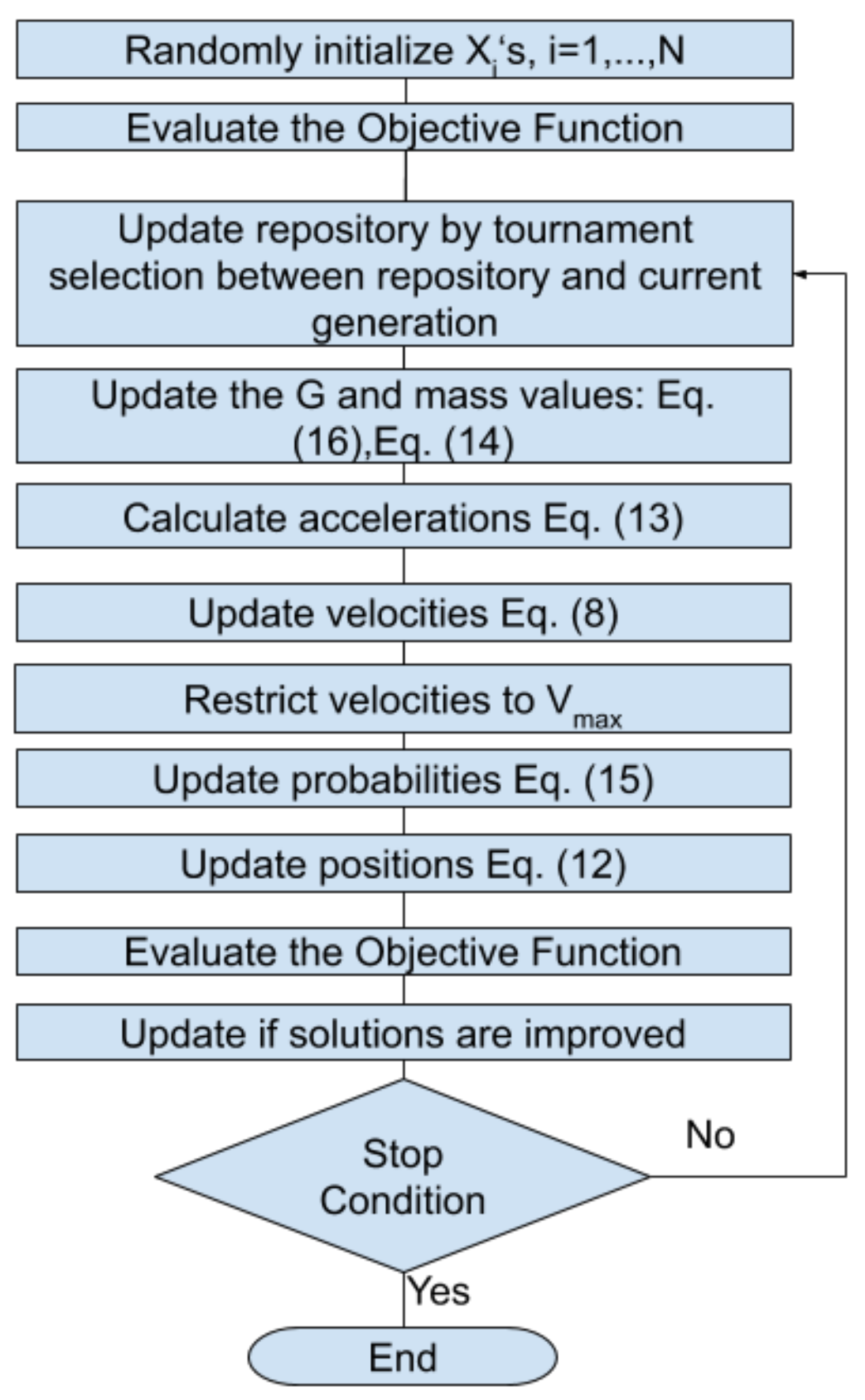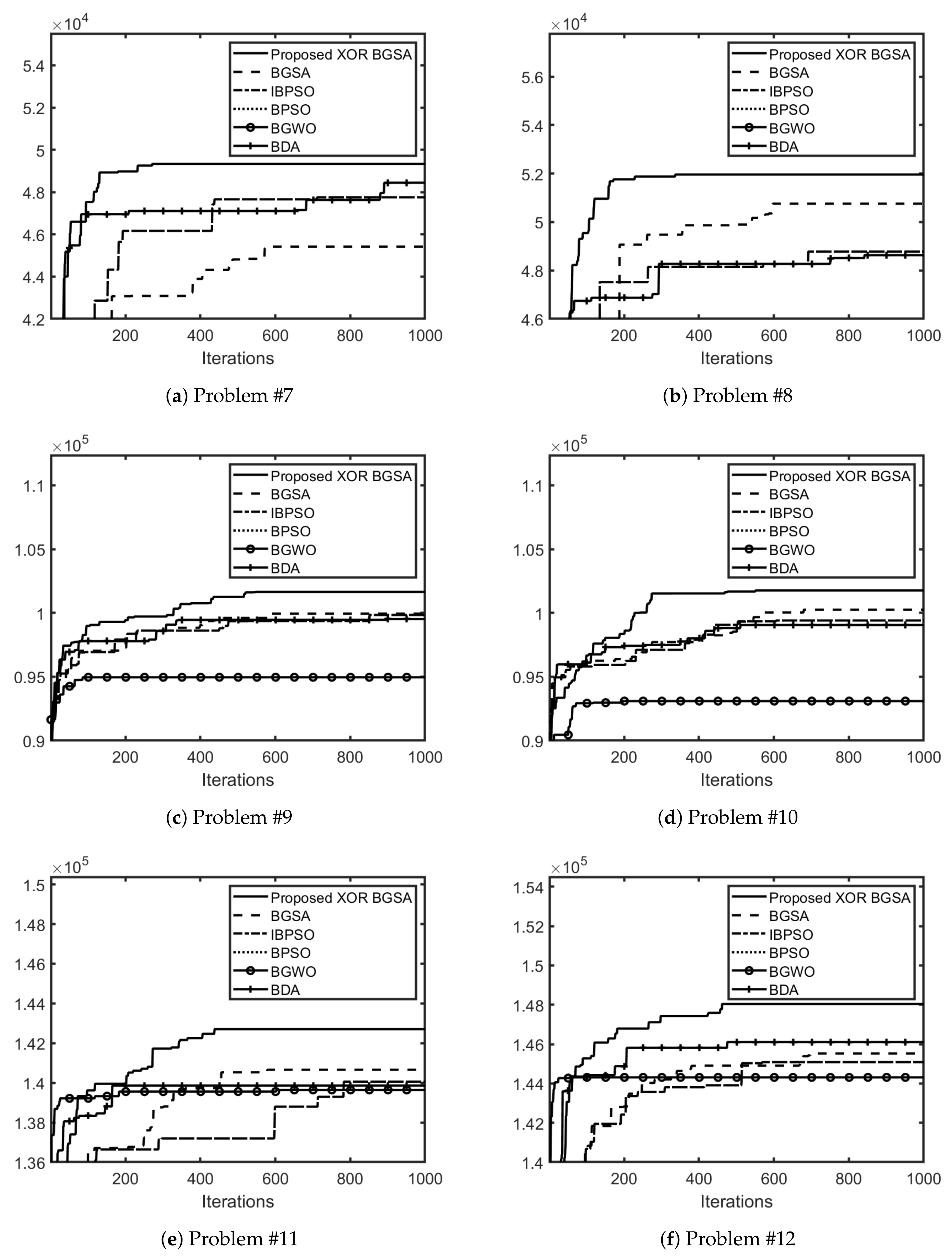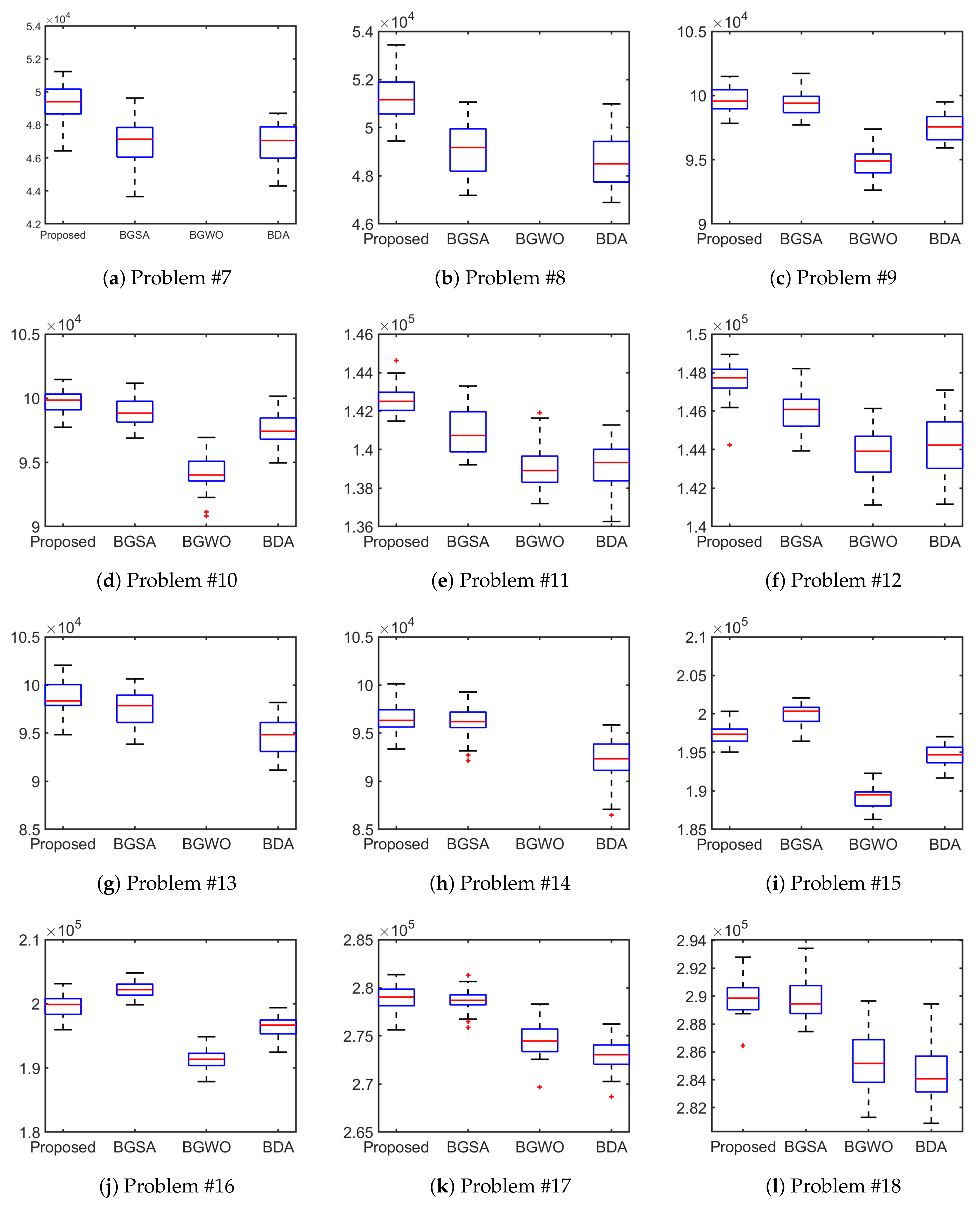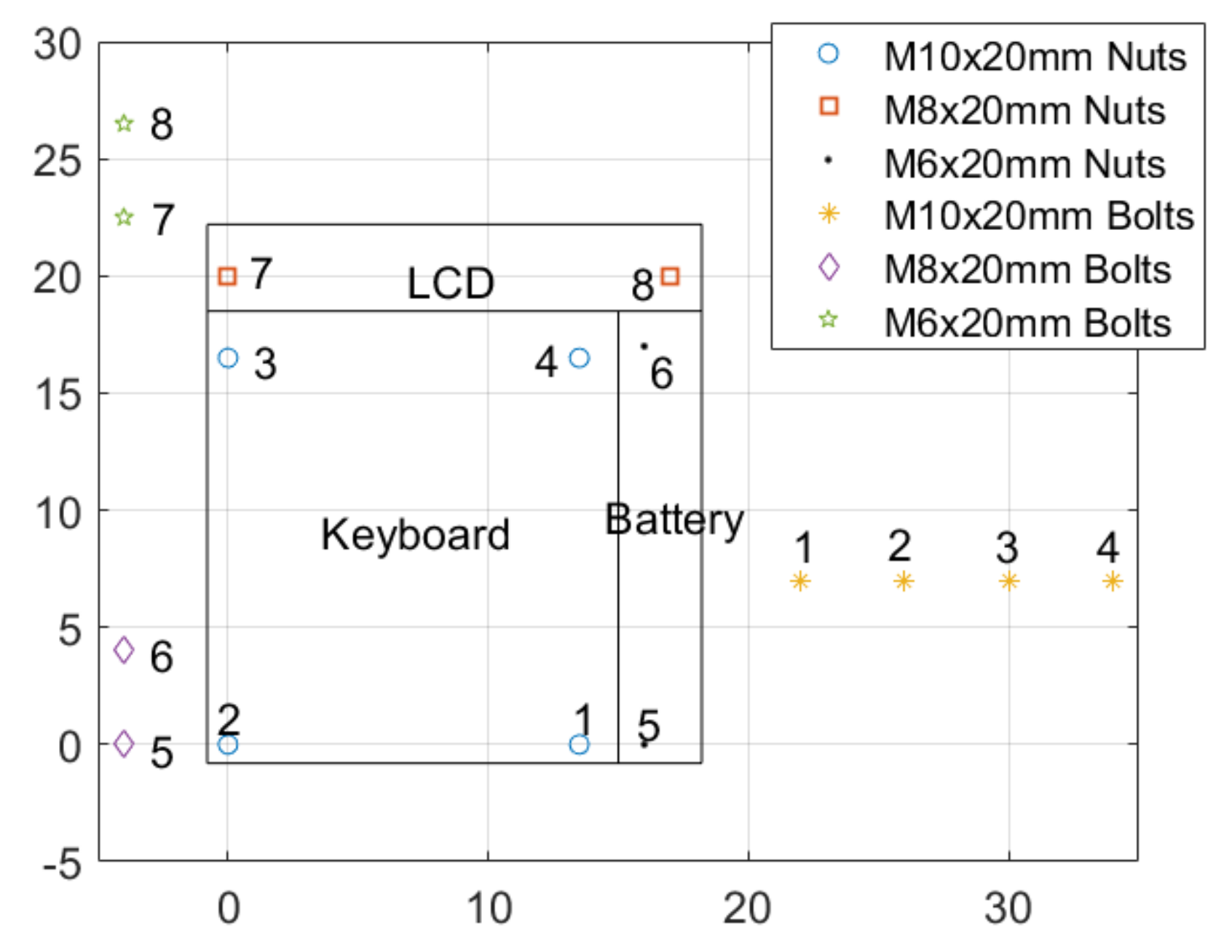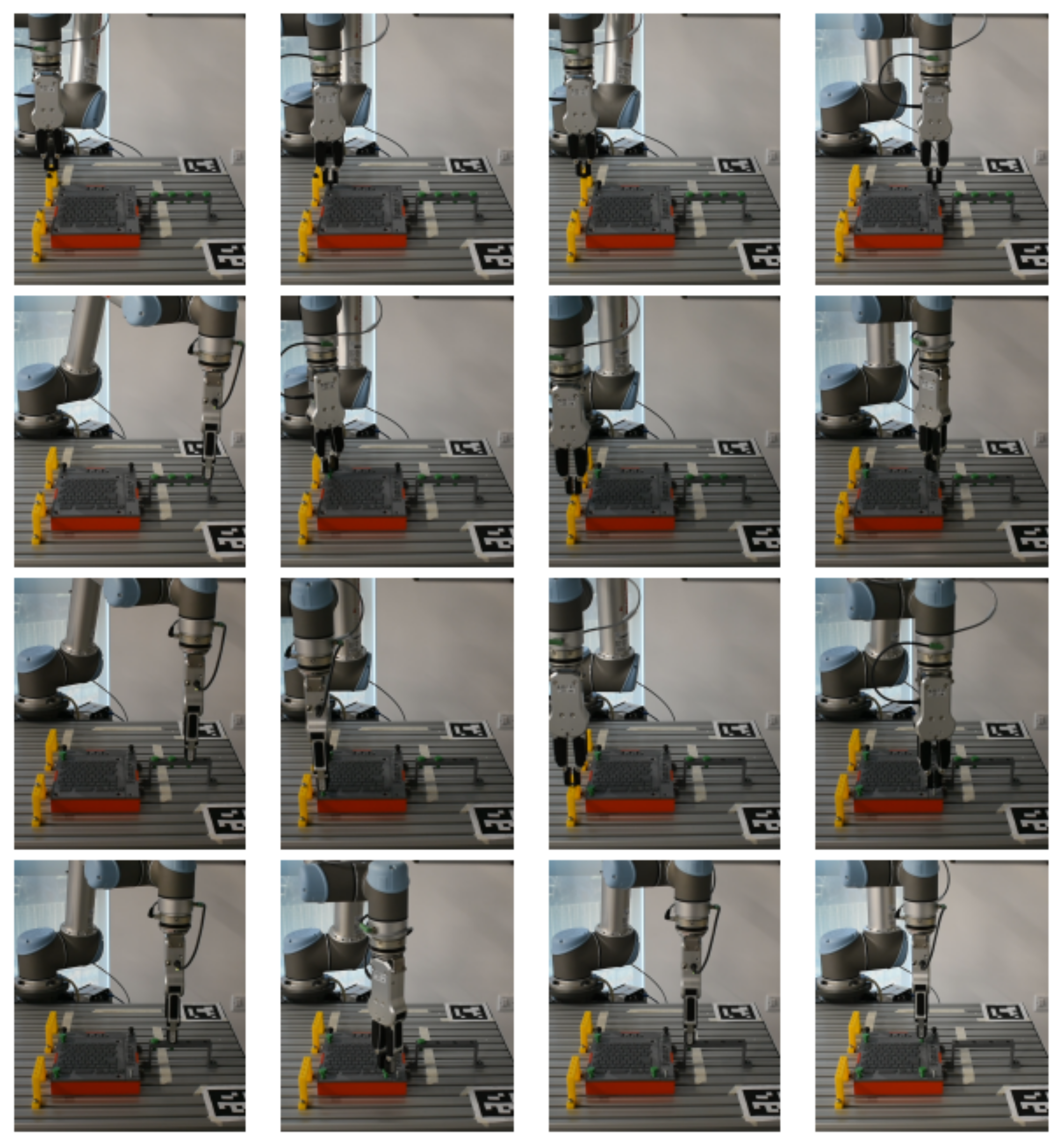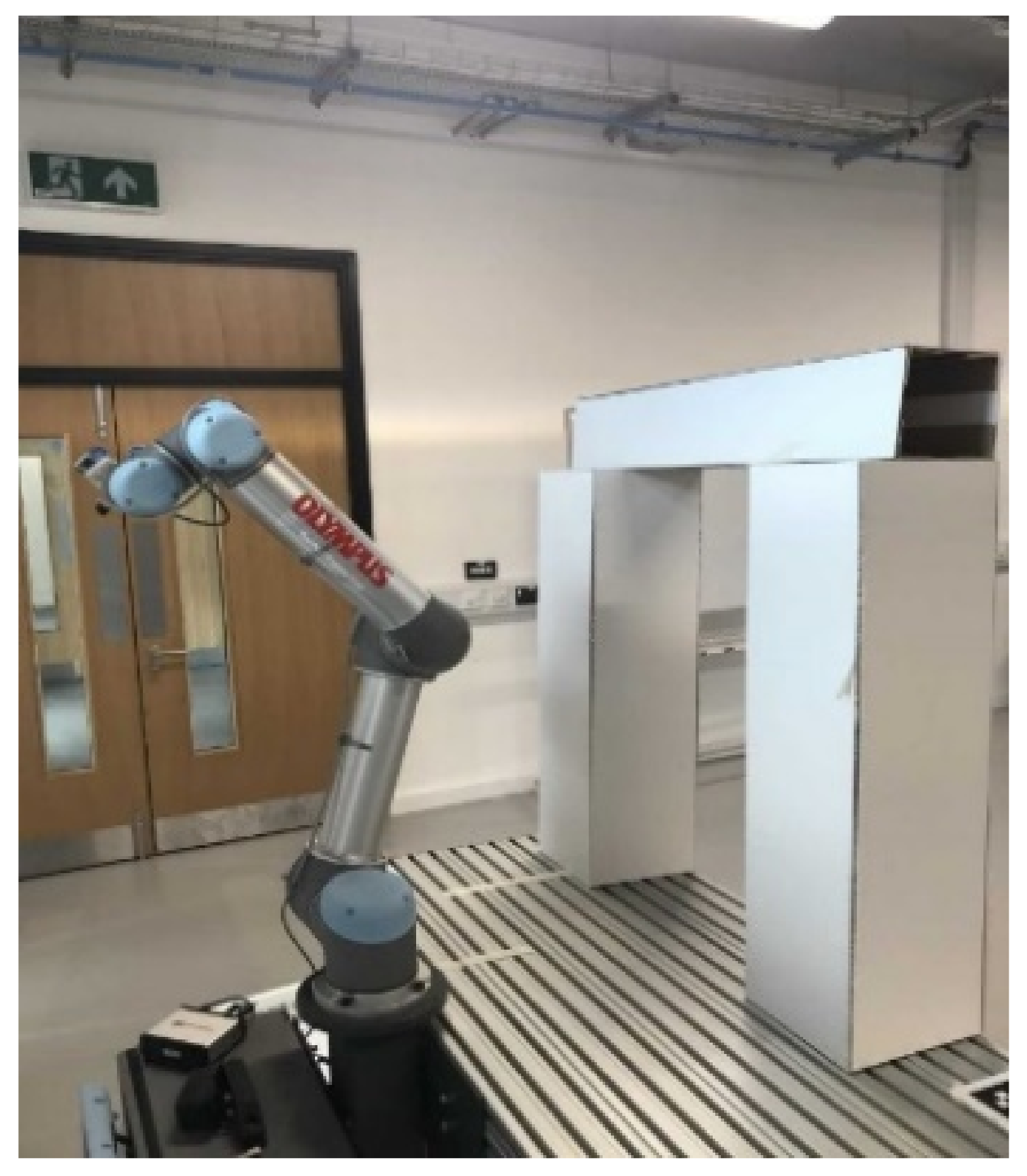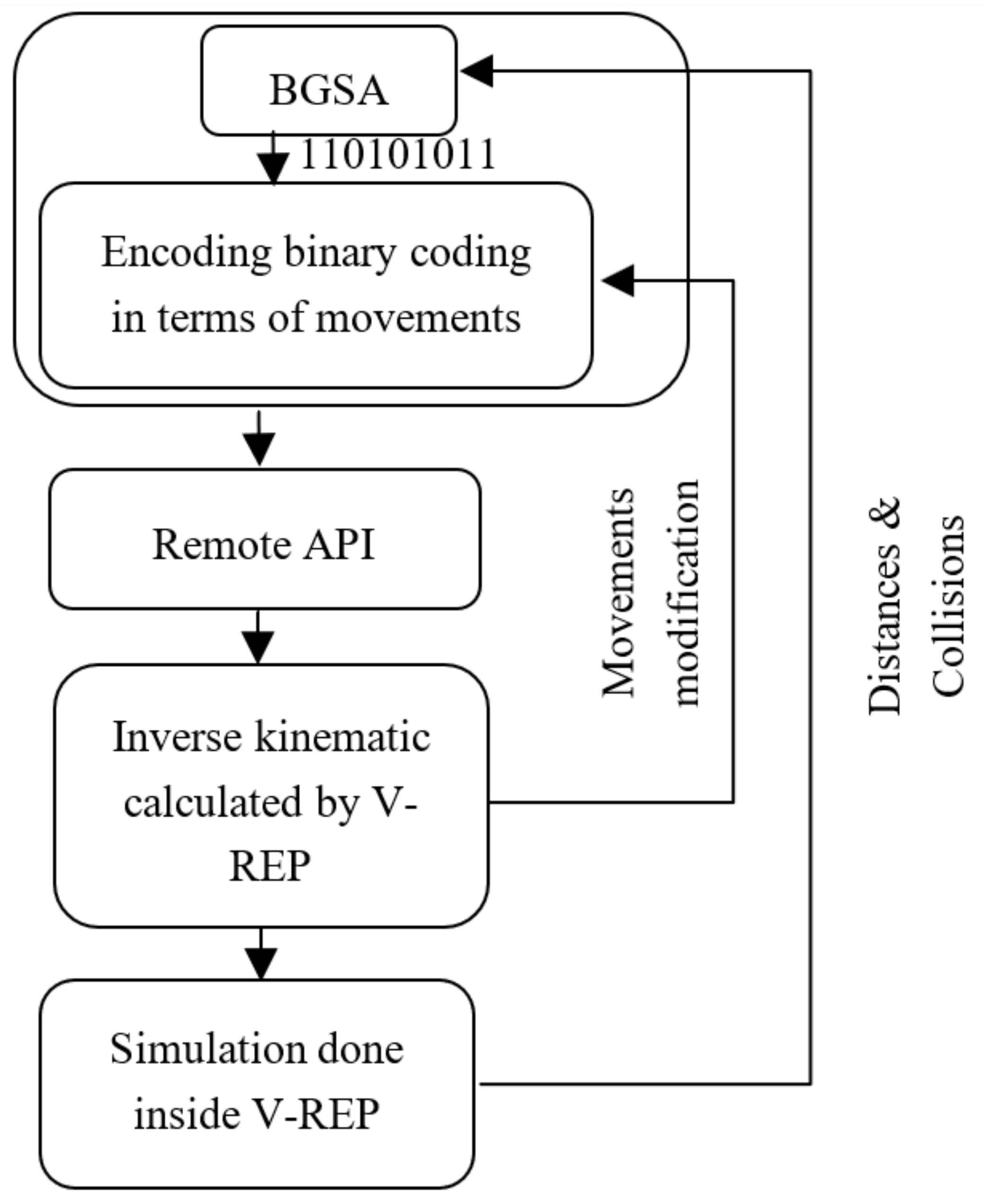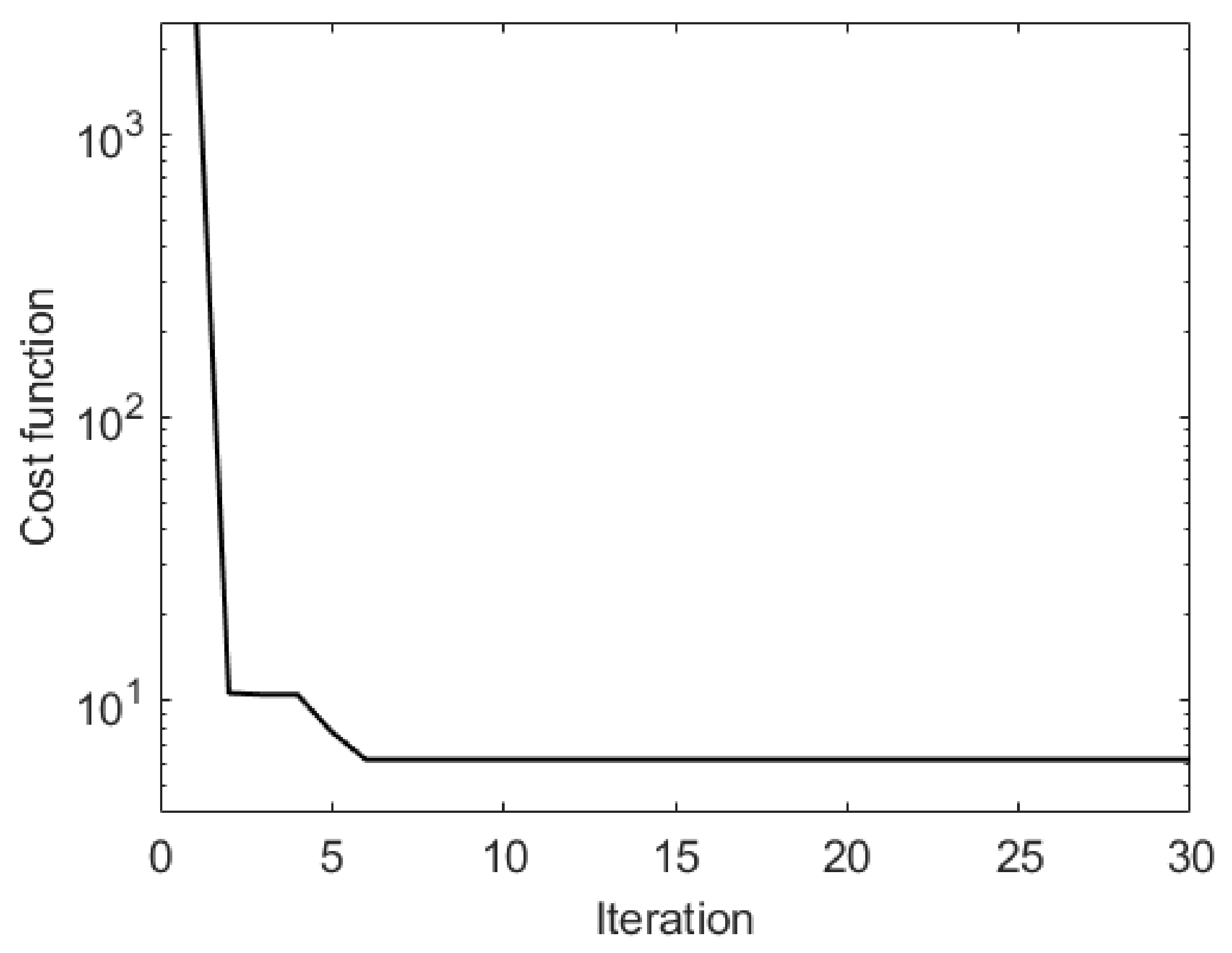4.2. Full Statistical Analysis of the Proposed Method
To perform theoretical analysis of the proposed XOR BGSA, a single dimensional optimization problem is considered. The parameter
in this case is equal to
1. Hence, in this section, we have a single particle whose behavior is studied and one best particle in the repository. The acceleration term, velocity term and the probability of change in the case of single dimensional optimization problem is obtained as follows:
where
, v(t), P(v) are single dimensional vectors representing the acceleration, velocity and the probability of change corresponding to the studied particle. Furthermore,
is the single dimensional vector representing the current position of studied particle and
is its corresponding value in the best particle in the whole population and
corresponds to the mass of the best particle in the repository. The minimum value of
is equal to
.
Two cases are investigated: the case when and the case when .
Case I:
Lemma 1. If and , we have and .
Proof. Considering (
13), we have the following equation for the acceleration term
:
where
is the dimension of the optimization algorithm. Consequently, considering (
18), one obtains the following inequality:
□
This implies that is monotonically non-increasing function of time.
Lemma 2. If and then , s.t. we have .
Proof. In the case when
, since according to Lemma 1
is monotonically non-increasing function of time, we have:
which means that
Lemma 2 holds. However, in the case when
, we have:
Since
, we have the following equation:
Considering the fact that
, one obtains the following inequality:
To find the appropriate
T, the following inequality needs to hold.
Considering the fact that
is a random variable uniformly distributed in [0, 1], the following equation holds.
By applying expected value of
as in (
27) to (
26), the following equation is obtained.
and finally
is obtained as follows:
Since
,
from (
29) we have
s.t.
one obtains
. This concludes the proof. □
Remark 1. Lemma 2 implies that in the case when the position in one dimensional optimization problem is the same as that of best particle, the velocity vector corresponding to that dimension grows in negative direction resulting in the probability of change to vanish to zero. This in turn results in no change in that dimension.
Lemma 3. If and , then , we have and .
Considering (
17), we have the following equation for the acceleration term
:
Consequently considering (
30), one obtains the following inequality:
This implies that is monotonically non-decreasing function of time.
Lemma 4. If and then , s.t. , we have .
Proof. In the case when
since according to Lemma 3,
is monotonically non-decreasing function of time we have:
which agrees with the Lemma 4. However, in the case when
, we have:
Considering the fact that
, the following equation is obtained.
Considering the fact that
, the following equation is obtained.
Hence, to find
T which satisfies Lemma 4, the following inequality needs to be hold.
Considering the fact that
is a random variable with uniform probability distribution function, the following equation holds.
By using the property of
as in (
36), the following is obtained.
Hence, the value of
to satisfy Lemma 3 is obtained as follows:
Since
,
from (
38), we have
s.t.
and one has
. This concludes the proof. □
Remark 2. It immediately follows from Lemma 4 that in the case when the position in one dimensional optimization problem is different than that of the best particle, the velocity vector corresponding to that dimension grows resulting in the probability of change to increase to one which would result in increase in the probability of change.
In the case when , the acceleration term is non-positive and the velocity term is a non-increasing function of time and the probability of change converges to zero.
In the case when , the acceleration term is non-negative and the velocity vector is a non-decreasing function of time and the probability of change converges to zero.
Proof. Using Lemmas 1–4, this theorem is concluded. □
Case II: :
Lemma 5. In the case when , the velocity vector will never be larger than , where is the initial value of the velocity.
In the case when , from (17), it follows that Considering (18), the following equation is obtained for Hence, is an upper bound for .
Remark 3. From Lemma 5, it is concluded that in the case when , the acceleration term is non-positive acting in the direction of decreasing the probability of change. However, the impact of depends on the sign of .
Lemma 6. In the case when , the velocity vector will never be smaller than .
In the case when , from (17), it follows that Considering (18), the following equation is obtained for Hence, is a lower bound for .
Remark 4. From Lemma 6, it is concluded that in the case when , the acceleration term is non-negative acting in favor of making probability of change in the corresponding bit higher. However, the impact of depends on the sign of .
Theorem 2. In XOR BGSA, considering sufficiently large number for maximum number of iterations, following properties hold.
If
,
, the probability of change becomes smaller than 0.5:
If
,
, the probability of change becomes larger than 0.5:
In the case when
, from Theorem 1 it follows that when
, as mentioned earlier in Remark 1, the velocity value grows in negative direction which results in:
Moreover, in the case when
, from Theorem 1 it follows that when
, as mentioned earlier in Remark 2, the velocity value grows larger which results in:
Hence in the case of , Theorem 2 holds. When , two cases are considered. The case when and .
If
, in the case of
, the velocity term according to (
18) is obtained as follows:
In the case of
, the velocity term according to (
13) is obtained as follows:
If
, in the case of
, considering the fact that
If
, from (
49), it can be seen that
is the result of addition of two negative terms resulting in a negative value for
. However, if
, considering the fact
, we have:
Hence, the time T after which we have
, is obtained from
and
Hence, after a sufficiently large value of iterations specified by T,
becomes negative and stays negative onwards. After that considering (
19), we have the following:
However, if
, in the case of
, considering the fact that
If
, from (
54), it can be seen that
is the result of addition of two positive terms resulting in a positive value for
. However, if
, similar to the analysis which resulted in (
50) and considering the fact
, we have:
Hence, the time
T after which we have
, is obtained from the following inequality
and
Hence after sufficiently large value of iterations specified by
T in (
57),
becomes positive and stays positive on-wards. After that, considering the probability of change as in (
19), it follows that:
This concludes the proof.
Remark 5. It immediately follows from Theorem 2 that if the value of a particle in one dimension is different than that of the best particle, the probability of change if not immediately, after sufficiently large number of iterations becomes larger than 0.5 making change in the corresponding dimension more probable than not. Moreover, if the value of particle in a dimension is similar to that of the best particle, the probability of change in that dimension if not immediately, after sufficiently large number of iterations becomes smaller than 0.5 making change in the corresponding dimension less probable.
Remark 6. The results obtained in Section 4 are valid for the case when . However, these results can be easily extended to the case when has a greater value in which case the value of particle effect other particles with a gain proportional to their mass. Hence, the overall probability of change is influenced by each of particles disproportionately. 